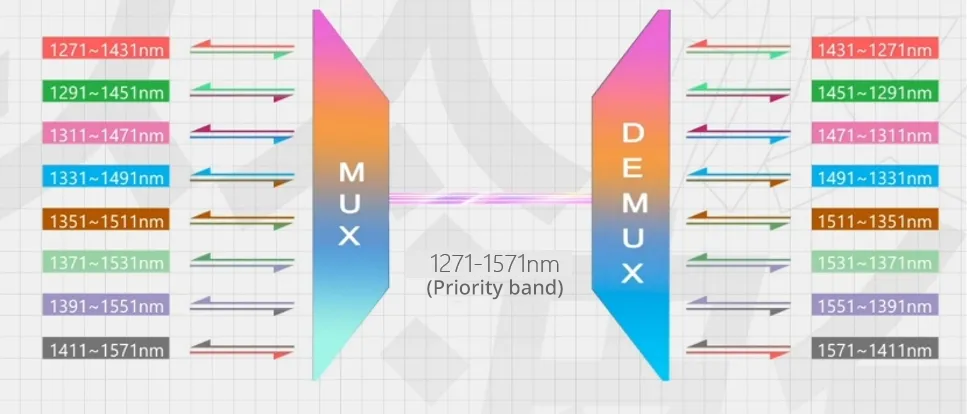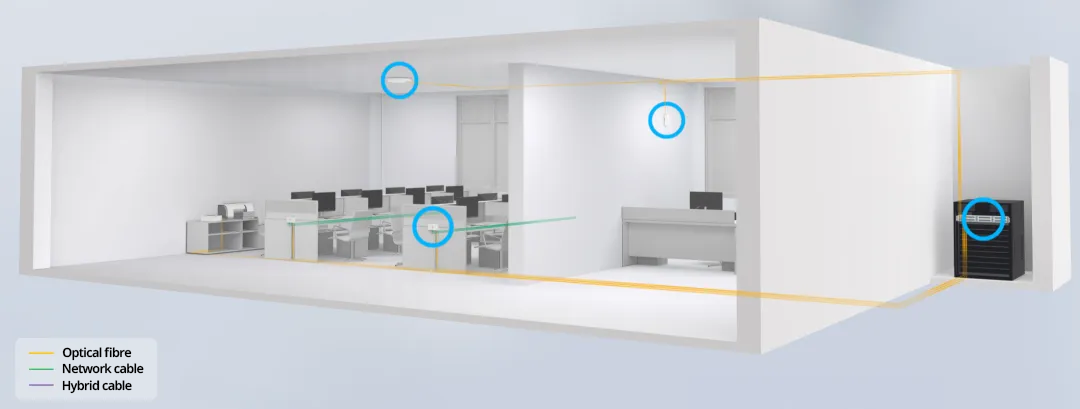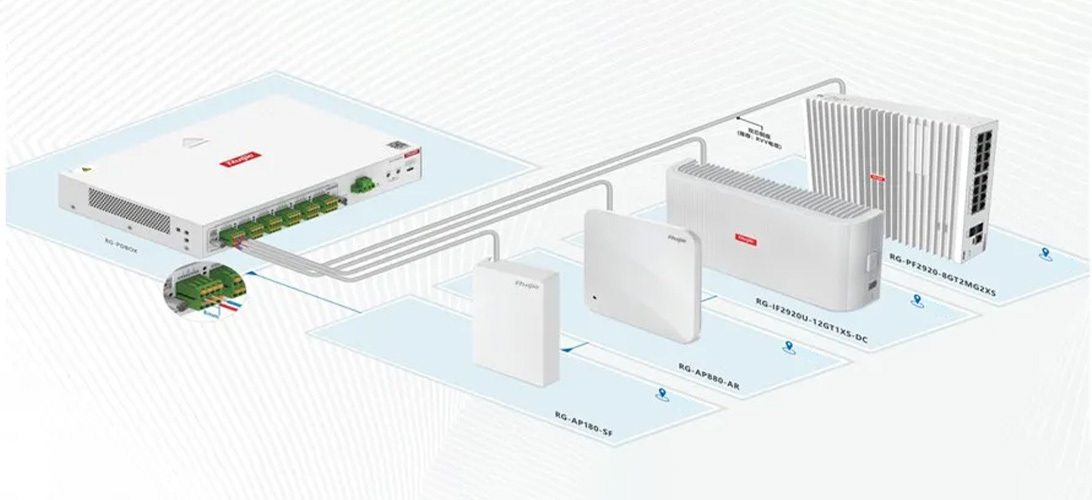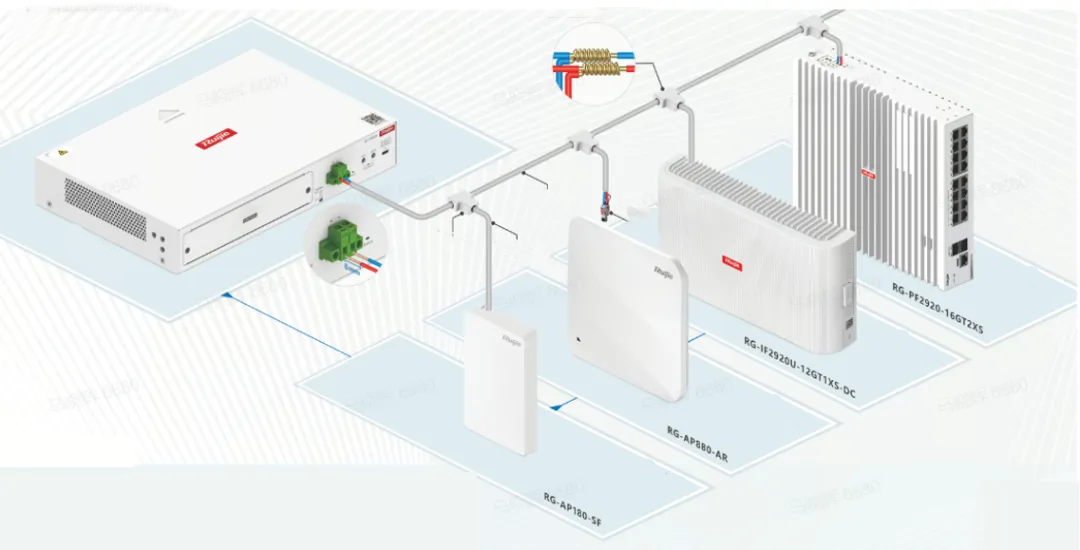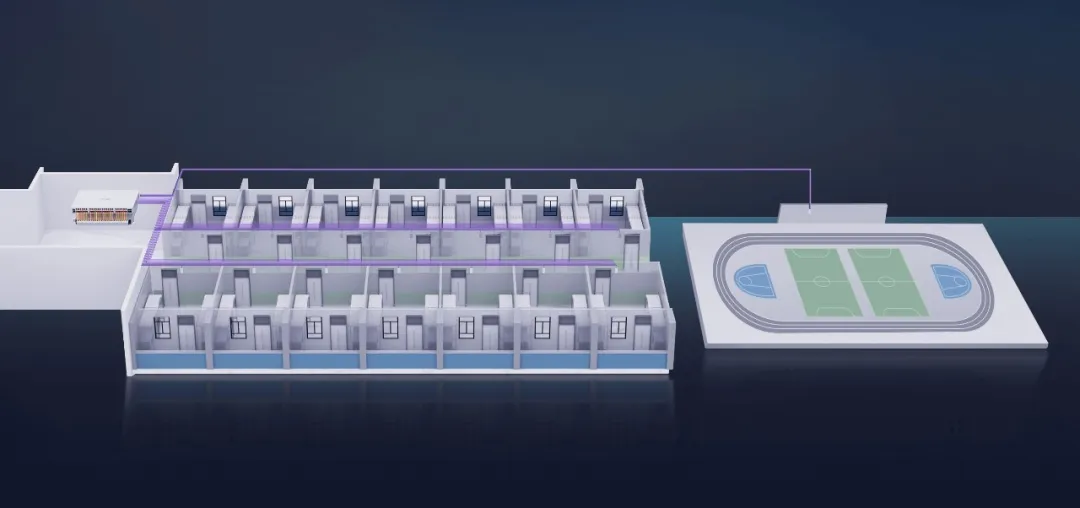In the ever-evolving world of technology, staying ahead means embracing innovative solutions tailored to your unique needs. Ruijie's SOE Solution is an advanced network solution, designed for customised solutions based on specific scenarios. If you're scratching your head at the term "SOE," don't worry. We've compiled a series of FAQs designed to help you deep dive into it, with the tools and knowledge to harness its full potential. Discover how this groundbreaking technology can seamlessly integrate into your organisation.
1. What are the core technologies of the SOE 3.X solution?
CWDM Technology
The core technology behind the SOE 3.X solution is Coarse Wavelength Division Multiplexing (CWDM). This technique allows multiple data streams to be transmitted simultaneously through a single optical fiber by using different wavelengths of light. Each wavelength carries a separate stream of information, greatly increasing the fiber’s data transmission capacity. CWDM technology enhances bandwidth utilisation and supports faster data transmission, providing stable and high-speed network connections. This is particularly beneficial in sectors like education, enterprise, and healthcare, where it meets the high bandwidth demands of today’s data-driven environments.
Aggregation switch
Ruijie Networks has enhanced its traditional switches by incorporating Coarse Wavelength Division Multiplexing (CWDM) technology. This upgrade not only supports dedicated bandwidth and flexible expansion but also, when paired with optical modules, it significantly reduces the number of core ports and core jumpers by 95%. This results in simpler deployment and reduced maintenance efforts.
Unidirectional 80G
The SOE deployment features a core optical module that consolidates 16 different optical signals (in 8 pairs for sending and receiving), each operating at 10G, into a single beam. This setup allows a single fiber to achieve a unidirectional bandwidth of 80G.
2. What are the differences between SOE and PON?
PON (Passive Optical Network) is a point-to-multipoint fiber network technology with a two-layer architecture. In this model, the OLT (Optical Line Terminal) functions as the core switch of SOE, while the ODN (Optical Distribution Network) distributes the fiber connected to the OLT ports in a 1:N ratio, connecting to ONUs (Optical Network Units) on the user side. PON uses TDMA (Time Division Multiple Access) for upstream communication, allowing only one ONU to transmit data to the OLT at a time, resulting in shared bandwidth among all ONUs.
In contrast, SOE also utilises fiber but it is based on Ethernet protocols and CWDM technology. This technology enables the simultaneous transmission of multiple optical signals over a single fiber in a point-to-point, dedicated mode, eliminating the need for optical splitting and increasing transmission efficiency by up to 8 times. The core data center deploys CWDM switches, connects with passive optical devices, and installs full-optical access switches in each room via fiber. This design minimises maintenance in low-voltage areas, while adheres to a two-layer architecture.
3. How Does the SOE 3.X Solution Achieve Lossless Bandwidth?
The SOE 3.X Solution employs CWDM to consolidate multiple optical signals, each with a distinct wavelength, into a single beam transmitted through one fiber. At the receiving end, the signals are separated according to their wavelengths. This approach enables the simultaneous transmission of several signals over a single fiber, with each signal traveling on a separate wavelength. Because these wavelengths do not interfere with one another, the solution ensures full bandwidth utilisation without any loss.
4. How does the SOE 3.X solution achieve core transparent distribution with dual uplinks?
The SOE 3.X solution achieves transparent distribution device to core devices by using splitters for dual uplinks. This splitter applies splitting technology to divide the uplink signals equally, resulting in two parallel links. This approach significantly improves the reliability of the connection between the core and access sides.
5. Does the SOE 3.X Solution Compatible with Wi-Fi 7?
Yes, the SOE 3.X Solution is fully compatible with Wi-Fi 7. It supports high-speed connectivity through 2.5G/10G ports and provides PoE+ power supply. This upgrade ensures superior performance for wireless data transmission and facilitates the deployment of multiple Wi-Fi 7 access points across various end-use scenarios.
6. How Can the SOE 3.X Network Be Centrally Managed with Existing Traditional Networks?
Ruijie SOE 3.X network integrates seamlessly with traditional networks, as both utilise Ethernet protocols. This compatibility allows for centralised management through SDN (Software-Defined Networking) integration. The SOE 3.X Solution features the INC (Intent Network Commander) or the embedded intelligent O&M system EMB, which offers a comprehensive platform for managing network devices, including switches, wireless access points, routers, and security systems, ensuring streamlined and efficient network operations.
7. Should Access Points (APs) in a Room Connect to a Room-Specific Switch or Directly to a Transparent Distribution Device?
The choice depends on the specific needs of the deployment. If the room requires numerous wired data points, it is best to connect the optical module to a switch within the room and then link the APs through this switch to provide wireless coverage. However, if there are few wired connections needed, connecting optical APs directly through the optical module to the transparent distribution device is recommended for a more streamlined setup.
8. How Are Access Points (APs) Powered in the SOE 3.X Solution?
The SOE Solution offers three methods for powering endpoint APs:
● For optical panel APs, power is supplied via copper cables connected to a Phoenix connector, which then plugs directly into the AP.
● For outdoor APs, power is provided through copper cables connected to an Ethernet cable (with dust and water protection at the connection point). The other end of the Ethernet cable is terminated with a registered jack and plugs into the outdoor AP.
● For other optical APs, power is supplied using copper cables connected to a power terminal (previously used by PRRU), which then connects to the optical AP.
9. How Does the SOE 3.X Solution Achieve Access Layer Power Supply?
The SOE 3.X Solution offers two methods for powering the access layer:
Method 1: Ethernet Optical Integration with Centralised Power Supply
This approach involves installing transparent distribution device in the Extra-Low Voltage (ELV) room and connecting it via fibre optics to optical APs. Centralised power supply units are placed in the high-voltage room, with cables providing PoE power to the optical APs, thus decoupling network and power supply functions. This setup simplifies management as the transparent distribution devices in the ELV room are passive and require no maintenance, while the power modules focus solely on delivering reliable power. Fibre optic resources are managed centrally, and power supply management is clearly defined and controlled. The integration supports multi-service demands with flexible, scalable access and power solutions. Two power supply scenarios are available:
● Point-to-Point Scenario: Isolates endpoint devices for enhanced security and reliability.
● One-to-Many Scenario: Simplifies cabling and reduces costs.
Method 2: Optical i-Share Master AP with Hybrid Cables
This method deploys an Optical i-Share Master AP in the building's low-voltage room, connecting Wi-Fi 6 and Wi-Fi 7 APs using hybrid optical-electrical cables. This setup supports up to 1100 meters of indoor data transmission and PoE power supply simultaneously, offering more convenient deployment and reducing the need for frequent link upgrades. It also lowers overall construction costs.
As industries evolve, their internal applications, network architectures, and device counts become increasingly complex. The Simplified Optical Ethernet (SOE) Solution addresses these challenges by integrating CWDM with Ethernet all-optical technology. This innovative approach drives a new phase of upgrades for network infrastructures, supporting digital and intelligent advancements across various sectors. To date, Ruijie's optical technology has been implemented in over 100,000 locations. We are dedicated to advancing the adoption of this technology to enhance network performance and provide industry clients with superior solutions and options for their networking needs.
